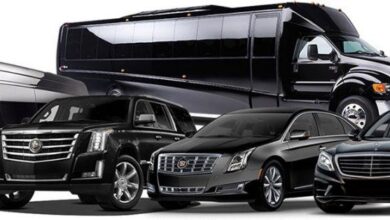How Does Uber’s Business Model Influence the Ride-Hailing Industry?
Introduction:
The emergence of ride-hailing services has completely transformed the transportation industry, and Uber is at the vanguard of this transformation. Since its inception, Uber has disrupted traditional taxi app development services by providing a cutting-edge and practical substitute for travelers all over the world. Central to Uber’s success is its innovative business strategy, which has had a big impact on the ride-hailing industry. In this in-depth analysis, we explore the complexities of Uber’s business model and its significant influence on the transportation landscape.
Understanding Uber’s Business Model:
At its core, Uber operates as a technology platform connecting riders with drivers through its mobile application. This model transcends the traditional taxi paradigm by leveraging the power of smartphone technology and data analytics. Unlike conventional taxi companies, Uber does not own a fleet of vehicles or directly employ drivers. Instead, it acts as an intermediary, facilitating transactions between independent contractors (drivers) and passengers.
Key Components of Uber’s Business Model:
- Technology Infrastructure:
Uber’s mobile application serves as the linchpin of its business model. Through the app, users can request rides, track their drivers in real time, and make cashless payments seamlessly. The app’s intuitive interface and robust backend infrastructure enable efficient matching of riders with nearby drivers, optimizing both convenience and efficiency.
- Dynamic Pricing Mechanism (Surge Pricing):
Uber employs a dynamic pricing mechanism, commonly known as surge pricing, to balance supply and demand during peak hours or in high-traffic areas. When demand surges, fares increase proportionally, incentivizing more drivers to enter the market and meet the heightened demand. While controversial, surge pricing has proven effective in ensuring ride availability during periods of high demand, albeit sometimes at higher costs for passengers.
- Driver-Partner Model:
Uber’s utilization of independent contractor drivers distinguishes it from traditional taxi companies. By treating drivers as independent partners rather than employees, Uber circumvents many of the regulatory and logistical challenges associated with traditional employment models. This approach provides drivers with flexibility in terms of working hours and allows Uber to scale rapidly without incurring the overhead costs of maintaining a fleet of vehicles and employing full-time drivers.
- Data-driven Decision-making:
Uber’s business model relies heavily on data analytics to drive strategic decision-making. The company collects vast amounts of data on rider preferences, traffic patterns, and driver behavior, enabling it to optimize its operations, enhance user experience, and identify growth opportunities. Data-driven insights also inform pricing strategies, route optimization, and driver incentives, thereby improving overall efficiency and profitability.
Impact of Uber’s Business Model on the Ride-Hailing Industry:
- Market Disruption and Competition:
Uber’s entry into the transportation market disrupted incumbent taxi services, challenging their dominance and forcing them to adapt or risk obsolescence. The company’s innovative business model and aggressive expansion strategies have catalyzed intense competition within the ride-hailing industry, leading to improved service quality, lower prices, and greater convenience for consumers. Additionally, Uber’s success has spurred the emergence of rival ride-hailing platforms, further intensifying competition and fostering innovation in the sector.
- Consumer Choice and Convenience:
Uber’s user-friendly mobile app and seamless booking process have elevated consumer expectations regarding convenience and flexibility in transportation services. By offering a convenient alternative to traditional taxis, Uber has empowered consumers with greater choice and control over their travel experience. Moreover, features such as real-time tracking, driver ratings, and cashless payments have enhanced transparency and trust, further enhancing the overall user experience.
- Employment Dynamics and Gig Economy:
Uber’s driver-partner model has reshaped the employment landscape, giving rise to the gig economy phenomenon. While offering drivers flexibility and autonomy, this model has also sparked debates over labor rights, worker classification, and income stability. Critics argue that treating drivers as independent contractors deprives them of essential benefits and protections afforded to traditional employees, such as health insurance and job security. As such, Uber’s business model has prompted calls for regulatory intervention to address labor issues and ensure fair treatment of workers.
- Urban Mobility and Congestion:
The proliferation of ride-hailing services like Uber has implications for urban mobility and congestion management. While offering an alternative to private car ownership and reducing reliance on personal vehicles, ride-hailing has also contributed to increased traffic congestion and environmental concerns in some cities. The convenience and affordability of Uber rides may incentivize more people to opt for individual trips, leading to greater congestion and emissions unless coupled with effective urban planning strategies and sustainable transportation policies.
- Regulatory Challenges and Legal Scrutiny:
Uber’s disruptive business model has encountered regulatory hurdles and legal challenges in various markets worldwide. Concerns over safety standards, driver screening, insurance coverage, and fair competition have prompted regulators to impose restrictions and regulations on ride-hailing companies. Uber has faced lawsuits, fines, and regulatory backlash in numerous jurisdictions, highlighting the tension between innovation and regulatory compliance in the rapidly evolving transportation landscape.
Conclusion
In conclusion, Uber’s groundbreaking business model, often mirrored in various uber clone platforms, has left an indelible mark on the ride-hailing industry. It has fundamentally altered customer behavior, redefined employment dynamics, reshaped urban mobility, and challenged existing legal frameworks. Leveraging data analytics, cutting-edge technology, and a dynamic workforce, Uber has transformed the transportation landscape, offering customers unprecedented choices, convenience, and cost-effectiveness. However, its disruptive influence has also raised significant concerns regarding regulatory oversight, labor rights, and broader societal implications. As Uber continues to navigate the intricacies of the modern transportation ecosystem, its innovative business model is poised to continue shaping the future course of the ride-hailing sector.



